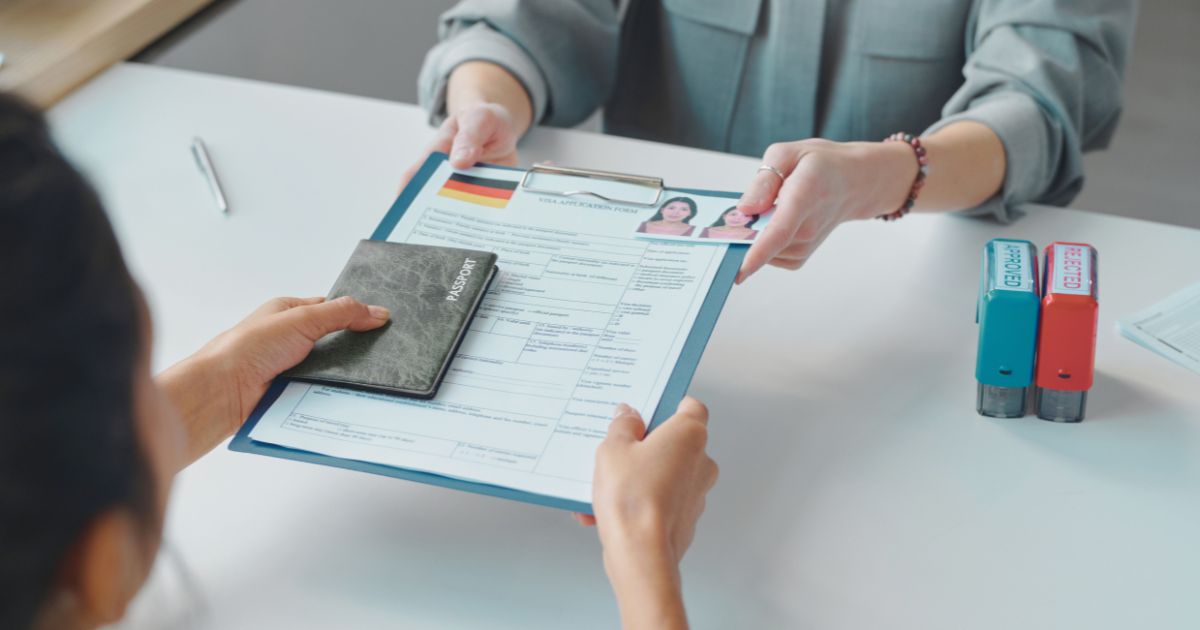Securing a work visa for Italy might seem daunting, but with the right approach, you can navigate the process successfully. As a digital nomad, understanding how to get a work visa for Italy opens doors to experiencing Italy’s rich culture, stunning landscapes, and exceptional cuisine while maintaining your professional life. Italy’s introduction of specific provisions for remote workers makes it an increasingly attractive destination for location-independent professionals.
This guide covers everything from traditional employment visas to Italy’s new digital nomad visa, providing clear steps for how to get a work visa for Italy. Whether planning a short-term stay or considering a more permanent move, we’ll help you understand the requirements for an Italian work visa and offer practical tips to make your transition smooth.
Understanding Italian work visa types

Before diving into how to get a work visa for Italy, it’s crucial to understand the different visa options available. The Italian immigration system offers various pathways depending on your employment situation.
1. Traditional employment visas
The standard work visa for Italy (Visto per Lavoro) is designed for those with traditional employment arrangements with Italian companies. This visa requires employer sponsorship and falls into several categories:
- Subordinate Employment Visa (Lavoro Subordinato): for those hired by Italian companies
- Self-Employment Visa (Lavoro Autonomo): for freelancers and entrepreneurs
- Seasonal Work Visa (Lavoro Stagionale): for temporary work in tourism and agriculture
These Italian work visas are subject to Italy’s annual quota system (Decreto Flussi), which limits the number of foreign workers allowed entry each year.
🌟 Pro tip: when applying for a work visa for Italy under the quota system, prepare your application well in advance, as slots fill quickly after the decree is published.
2. Special cases outside the quota system
Certain professionals can apply for an Italian work visa outside the annual quota limitations, including highly skilled workers qualifying for the EU Blue Card, university professors, researchers, translators, professional athletes, and executive-level managers.
If you fall into one of these categories, you can apply for your work visa for Italy at any time without waiting for quota availability.
3. Italy’s digital nomad visa
In 2022, Italy approved legislation introducing a specific visa designed for remote workers. This visa allows location-independent professionals to live in Italy while working for foreign employers or clients.
The visa offers one-year duration with renewal possibility, simplified application process, and no requirement for Italian employer sponsorship. Implementation requirements are being finalized, but expect to provide proof of remote employment, minimum income (around €28,000/year), health insurance, and accommodation arrangements.
💡 Did you know? Italy joins countries like Estonia, Croatia, and Portugal in creating specific work visa pathways for location-independent professionals.
Eligibility requirements for Italian work visas

Qualifying for a work visa for Italy requires meeting specific criteria that vary by type. Understanding these requirements is crucial before beginning the application process.
General requirements for all work visas
Regardless of the specific Italian work visa type, all applicants must provide: valid passport with at least six months validity, completed visa application form, recent passport-sized photographs, proof of financial resources, health insurance coverage, clean criminal record, and proof of accommodation. These form the foundation of any Italian work visa application.
Traditional employment visa requirements
For employer-sponsored work visas for Italy, you’ll also need a signed work contract from an Italian employer, Nulla Osta (work authorization) obtained by your employer, and proof of professional qualifications. The Nulla Osta confirms your employment complies with Italy’s labor laws and quota limitations.
Digital nomad visa requirements
For the Italian digital nomad work visa, prepare to provide proof of employment outside Italy, evidence of minimum income (around €28,000/year), documentation of remote work capabilities, health insurance valid in Italy, and proof of accommodation.
🌟 Pro tip: when applying for any type of work visa for Italy, submit more documentation than required to demonstrate strong ties to your home country and intention to return after your visa expires.
Step-by-step application process

Learning how to get a work visa for Italy requires attention to detail and careful preparation. Here’s a clear roadmap to guide you through each stage of the process.
Pre-application preparation
- Determine the appropriate visa type: based on your work arrangement, identify which Italian work visa option best suits your situation.
- Gather required documents: collect all documentation related to your category. Have documents translated if required.
- Employer coordination: for employer-sponsored visas, ensure your Italian employer has initiated the Nulla Osta process.
- Schedule appointment: contact the Italian embassy or consulate to schedule a work visa application appointment.
Submitting your application
- Complete the application form: fill out the National Visa (Type D) form for your work visa for Italy.
- Attend your appointment: bring all original documents and copies. Be prepared for a brief interview.
- Biometric data collection: provide fingerprints and a digital photograph.
- Pay the application fee: fees typically range from €116 to €130.
Post-application steps
- Application processing: work visa applications typically take 1-3 months to process.
- Visa collection: if approved, collect your Italian work visa sticker for your passport.
- Entering Italy: upon arrival, you have eight days to apply for a residence permit.
- Permit application: complete the permit kit available at Italian post offices.
- Fingerprinting appointment: you’ll receive an appointment at the local immigration office.
💡 Did you know? The residence permit (Permesso di Soggiorno) must be carried with you at all times in Italy.
Technology and connectivity for digital nomads in Italy

Working remotely in Italy requires reliable connectivity. Understanding the technological landscape is essential for maintaining productivity.
Internet infrastructure across Italy
Italy’s internet connectivity varies between urban and rural areas. Major cities like Milan, Rome, and Florence offer strong connectivity with fiber networks, while smaller towns might have more limited service.
Urban centers provide 4G/5G coverage and fiber connections ranging from 30-1000 Mbps, while rural areas may rely on DSL with speeds of 7-20 Mbps.
Major providers include TIM, Vodafone, Wind Tre, and Fastweb, offering various mobile and fixed packages.
🌟 Pro tip: ensure seamless connectivity with Holafly’s eSIM, which provides reliable data access across Italy without physical SIM cards. Their flexible plans are perfect for digital nomads traveling between Italian regions.
Coworking spaces and digital hubs
Italy’s coworking culture has expanded dramatically, with spaces available in every major city. Milan, Rome, and Florence host numerous professional environments, while smaller locations like Bologna, Bari, and Palermo have emerging digital communities.
Popular coworking networks include Talent Garden, Cowo, and Impact Hub, offering high-speed internet, meeting rooms, and networking opportunities. Many spaces provide day passes and flexible membership options perfect for digital nomads.
Italy’s digital nomad scene has grown substantially, with regular meetups and events in major cities helping newcomers connect with established remote workers.
Digital banking and financial services
Managing finances remotely requires preparation. Italian bank accounts typically require a tax code (Codice Fiscale) and residence permit, making them challenging for short-term visitors. Many digital nomads use international banking solutions like Wise, Revolut, or N26, offering competitive exchange rates and multi-currency capabilities. For tax considerations, Italy has treaties with numerous countries to prevent double taxation, though tax residency can trigger after 183 days in the country. Consulting with an accountant familiar with expatriate taxation is advisable for longer stays.
Practical tips for success

These practical insights can improve your chances when applying for how to get a work visa for Italy.
Documentation and organization
Navigating Italian bureaucracy requires organization: create a document checklist to track each required document, maintain digital copies stored securely, bring multiple copies as officials often require duplicates, and use a dedicated folder to keep originals organized.
🌟 Pro tip: create a dedicated email address for your visa application process to keep correspondence organized.
Cultural understanding and preparation
Cultural adaptation significantly impacts your Italian experience: learn basic Italian phrases to demonstrate respect, understand that government offices typically close during lunch (1:00-3:00 PM), arrive early for appointments as Italian bureaucracy can be unpredictable, and practice patience as processes may take longer than expected.
Professional support resources
Seeking professional assistance can be invaluable: immigration attorneys for complicated cases, visa service agencies for document preparation, relocation consultants for application and settling support, and expat networks for practical advice from experienced nomads.
💡 Did you know? Many Italian cities have immigration support offices that offer free assistance with residence permit applications.
Final thoughts: your Italian work visa adventure
The journey to get a work visa for Italy may seem complex, but the rewards of living and working in this vibrant country make the effort worthwhile. From Milan’s business centers to Florence’s artistic heritage or Sicily’s coastal beauty, Italy offers digital nomads an unparalleled blend of professional opportunities and quality of life.
The traditional Italian work visa options serve those with employer sponsorship, while the digital nomad visa offers exciting possibilities for remote workers. By understanding requirements and approaching the process with patience, you can successfully navigate Italian immigration.
As regulations evolve, particularly regarding how to get a work visa for Italy as a digital nomad, staying informed through official channels and expat communities is essential. With proper preparation, you’ll soon be enjoying your espresso while working remotely with a view of historic architecture or breathtaking landscapes.
Ready to begin your Italian work visa journey?
Need help figuring out how to get a work visa for Italy? We provide resources for remote workers looking to navigate the visa process with confidence.
Explore our guides on finding accommodation, understanding local cultures, and managing finances abroad to prepare for your Italian adventure. Our community of experienced digital nomads offers insights and support for newcomers learning how to get a work visa for Italy.Ready to make Italy your next remote work destination with the right visa? Let Nomada guide you 👉
Frequently asked questions
Processing time typically ranges from 1 to 3 months after submission. This timeline varies based on your nationality, visa category, and consulate workload. Additional time should be allowed for gathering documents and securing appointments.
For traditional work visas, an offer from an Italian employer is generally required. However, the digital nomad visa and self-employment options may allow application without an Italian employer, provided you meet specific income and professional requirements.
The work visa for Italy is issued by Italian consulates abroad to allow entry. The residence permit (Permesso di Soggiorno) is obtained after arriving in Italy. This visa allows entry, while the permit authorizes your stay.
Yes, Italy offers family reunification options. Once you have a valid residence permit, your spouse and dependent children can join you through a reunification process. They would receive permits tied to yours, with requirements varying based on your visa type.
If rejected, you should receive a written explanation. You may appeal the decision, submit a new application with additional documentation, or apply for a different visa category. Consulting with an immigration attorney is advisable in case of rejection.



